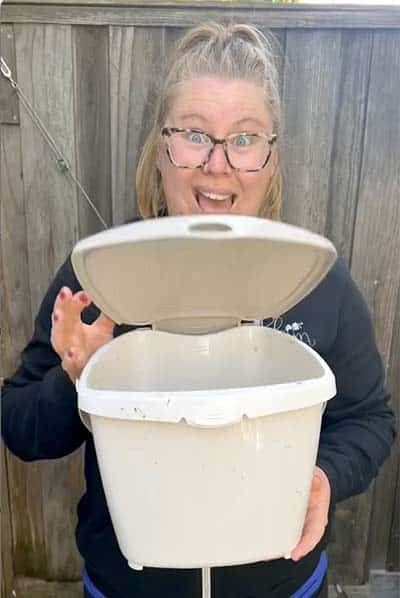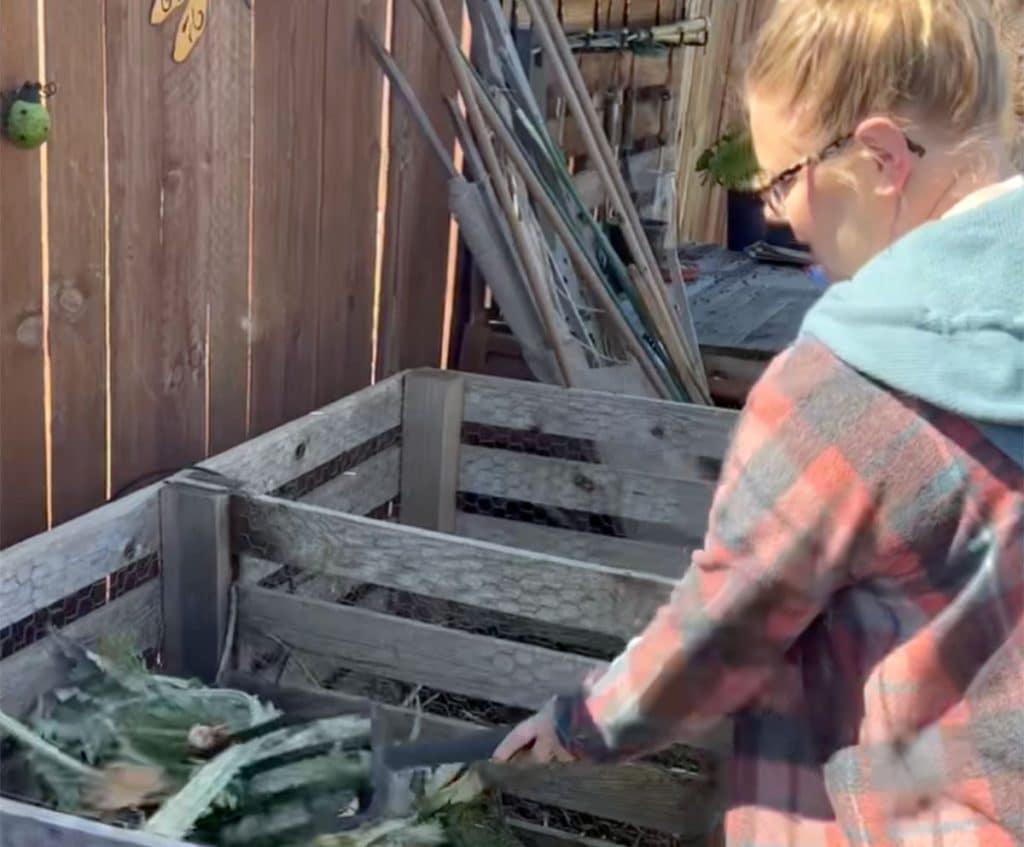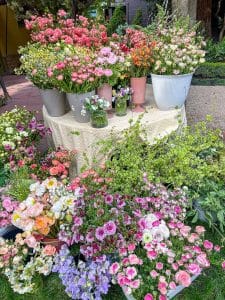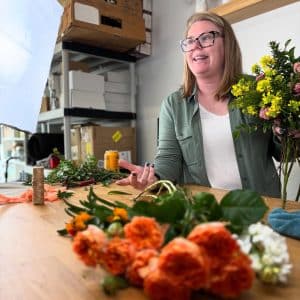Earth Day is coming up this weekend, and you don’t need to move to a solar-powered house made of straw to live a little greener. You can make a few small changes at home that will reduce your carbon footprint and even create some goodies that your backyard garden will love (if you’re into that!). Read on to learn more about the ins and outs of composting.
What is composting, and why should I care?
Strictly speaking, composting is just a way to keep the organic materials from going into your garbage can. Those table scraps, grass clippings, DIY flower clippings and more can be turned back into material to help your garden thrive — or, at the very least, make the carbon footprint of your trash can a little smaller.
Yes, it can actually be a bad thing if your regular garbage can has too much compostable material in it. When organic material decomposes in a landfill, it creates methane, which is a powerful greenhouse gas.
“Over a 20-year period, it is 80 times more potent at warming than carbon dioxide,” the UN’s Environment Program says about methane. “Methane has accounted for roughly 30 percent of global warming since pre-industrial times and is proliferating faster than at any other time since record keeping began in the 1980s.”
In response, California in 2016 passed a law, Senate Bill 1383, that gradually phases in more rules intended to keep organic waste out of landfills. As of 2022, Californians are now required to compost organic waste instead of tossing it into the garbage can.
‘Nature’s way of recycling’
So what is composting, and how does it help? It’s a way to let that organic waste decompose until it becomes a type of soil amendment or mulch. There are several methods to composting (we’ll get to that in a moment!), but they all have the same basic benefits: making your soil and the planet a little bit healthier at the same time.
“Composting is nature’s way of recycling,” the EPA says. “It is one of the most powerful actions we can take to reduce our trash, address climate change, and build healthy soil.”
How do I compost at home?
There are really only a few basic ingredients needed to compost at home: green (wet) materials like food scraps or grass clippings, brown (dry) materials like dry leaves or twigs, water and air. Basically, combine all of those and let the microorganisms turn your scraps into amendment or mulch! CalRecycle has a great guide to the basics of keepings your compost pile going, including what to do if it gets too stinky or doesn’t break down as expected. The EPA goes into even more detail, explaining the benefits to worm-based composting and more.
Is it worth it to compost at home?
But wait — before you go out and turn your entire backyard into a compost pile, is it worth it? Consider how you would use the resulting compost, and if it’s really worth the effort. If you don’t garden at all, why would you go to all the trouble to create a bunch of soil amendment? Ultimately you need to be sure whatever you do makes sense for you and your family (one of my favorite sayings!). There are still ways to make an impact and be sustainable without too much effort.
So, here are a few home composting methods to consider:
Compost method 1: Tumbler
No, I’m not talking about the microblogging website. A compost tumbler can be a simple, contained and neat way to have a decent amount of compost without much work. Because it’s contained and easy to turn, it provides one of the best bang-for-your-buck ways to compost. This is one of the ways that we compost at home.

Compost method 2: Countertop bin
A countertop (or under-sink) compost bin can be a great way to collect small amounts of food scraps and waste because you’ll never be too far away from it (and you don’t even need to put your shoes on!). Many municipalities gave away countertop compost bins last year to coincide with the start of the new composting rules, but if you want to pick up a new one, the Wirecutter has a good roundup of bin and tumbler options.
Just in time for Earth Day, the city of Sacramento will be giving away a limited number of home composting bins this weekend at events in Natomas and at Southside Park. Sacramento County residents can request a countertop bin at the locations listed here.
Compost method 3: Let the city deal with it!
With those new composting rules that I mentioned, it has suddenly become way easier to ensure that your food scraps and other organic waste is composted. Most local governments have asked residents to start tossing that organic waste into the green waste bin that typically holds grass clippings and other plant materials. (Placer County residents are one notable exception, since their trash and recycling goes into a single can and is sorted at the processing facility.) It’s then taken to an industrial composting facility, which can process a wider variety of materials than can be composted at home: While experts warn home composters not to add meat or dairy products to their compost piles, industrial composting facilities can break those products down just fine. Handing off your green waste to a municipality is the perfect no-fuss way to reduce your carbon footprint when you don’t really have a need for soil amendment or a place to store a home composter.
Compost method 4: Pile it on
Perhaps the most natural approach to composting at home is to just throw it on a pile and let nature do its thing. You’ll definitely need more space for this approach, as CalRecycle recommends a minimum of three feet by three feet for a compost pile. As I mentioned earlier, the EPA goes into great detail on this topic, including how thick each layer should be and more.
When I set out to learn more about home composting, I paid a visit to Beth and Lucas at Our Liberty House. They have a very cool, easily replicable backyard composting system that would work great for a suburban gardener.
This method definitely takes a little more space and effort, but it’s a great way to utilize your yard for a good cause. Beth and Lucas told me that the key to determining whether it makes sense to invest the time and money into building a system like this is thinking about how you’ll use it and the resulting soil amendment.
As I always say, you have to do what’s best for you and your family — especially when it comes to composting!
I hope you feel a little more empowered to make an informed decision about home composting now and what method makes the most sense for you. Happy Earth Day!



